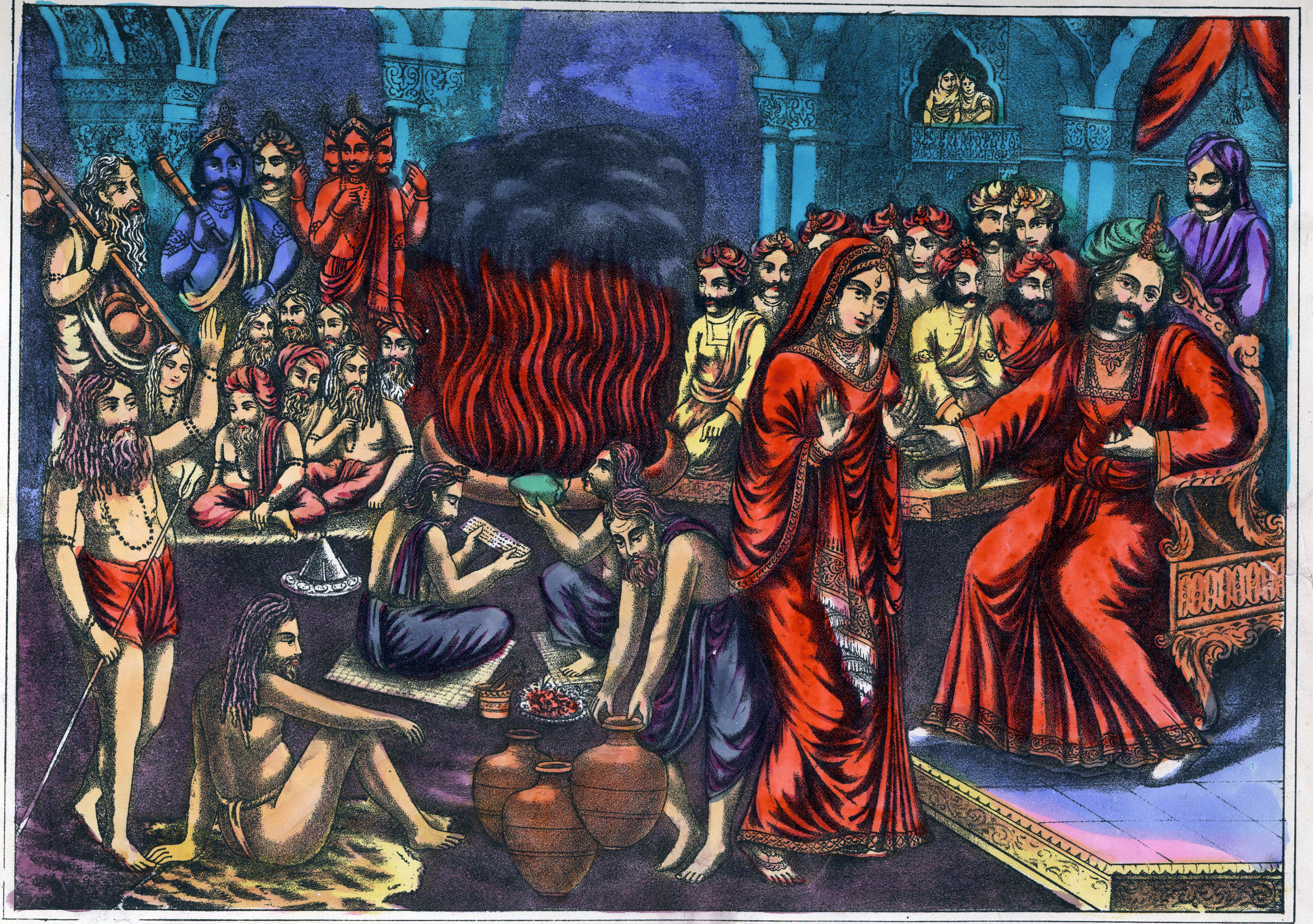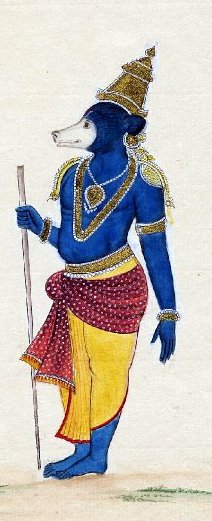|
Bramha
Brahma ( sa, ब्रह्मा, Brahmā) is a Hindu god, referred to as "the Creator" within the Trimurti, the trinity of supreme divinity that includes Vishnu, and Shiva.Jan Gonda (1969)The Hindu Trinity Anthropos, Bd 63/64, H 1/2, pp. 212–226. He is associated with creation, knowledge, and the ''Vedas''. Brahma is prominently mentioned in creation legends. In some ''Puranas'', he created himself in a golden embryo known as the Hiranyagarbha. Brahma is frequently identified with the Vedic god Prajapati.;David Leeming (2005), The Oxford Companion to World Mythology, Oxford University Press, , page 54, Quote: "Especially in the Vedanta Hindu Philosophy, Brahman is the Absolute. In the Upanishads, Brahman becomes the eternal first cause, present everywhere and nowhere, always and never. Brahman can be incarnated in Brahma, in Vishnu, in Shiva. To put it another way, everything that is, owes its existence to Brahman. In this sense, Hinduism is ultimately monotheistic or m ... [...More Info...] [...Related Items...] OR: [Wikipedia] [Google] [Baidu] |
Satyaloka
Brahmaloka (Sanskrit: ब्रह्मालोक, IAST: Brahmāloka) or Satyaloka (Sanskrit: सत्यलोक) is the abode of Brahma, the creator god, a member of the Trimurti along with Vishnu and Shiva, along with his consort Saraswati. It is also referred to as Brahmapura, in the Puranas. Brahmaloka, described to be 60,000,000 miles above the Prajapati loka, is considered to be of great soteriological significance, the sphere where its inhabitants never again know death, dwelling perpetually in the company of yogins, and drinking the excellent nectar of yoga. Location In the center of Brahmaloka is Brahmapura, a huge palace where Brahma resides. Description Brahmaloka is a realm composed entirely of Brahman, considered superior to the Svarga loka and is full of immortal energy, knowledge and bliss. It is also known as the planet of the Bhagavān. The above statement shows that Brahmaloka is an eternal Vaikuntha that is neither created nor located within the ... [...More Info...] [...Related Items...] OR: [Wikipedia] [Google] [Baidu] |
Brahmaloka
Brahmaloka (Sanskrit: ब्रह्मालोक, IAST: Brahmāloka) or Satyaloka (Sanskrit: सत्यलोक) is the abode of Brahma, the creator god, a member of the Trimurti along with Vishnu and Shiva, along with his consort Saraswati. It is also referred to as Brahmapura, in the Puranas. Brahmaloka, described to be 60,000,000 miles above the Prajapati loka, is considered to be of great soteriological significance, the sphere where its inhabitants never again know death, dwelling perpetually in the company of yogins, and drinking the excellent nectar of yoga. Location In the center of Brahmaloka is Brahmapura, a huge palace where Brahma resides. Description Brahmaloka is a realm composed entirely of Brahman, considered superior to the Svarga loka and is full of immortal energy, knowledge and bliss. It is also known as the planet of the Bhagavān. The above statement shows that Brahmaloka is an eternal Vaikuntha that is neither created nor located within the ... [...More Info...] [...Related Items...] OR: [Wikipedia] [Google] [Baidu] |
Angiras (sage)
Angiras or Angira (Sanskrit: / ', pronounced ) was a Vedic rishi (sage) of Hinduism. He is described in the ''Rigveda'' as a teacher of divine knowledge, a mediator between men and gods, as well as stated in other hymns to be the first of Agni-devas (fire gods). In some texts, he is considered to be one of the seven great sages or ''Saptarishis'', but in others he is mentioned but not counted in the list of seven great sages. In some manuscripts of ''Atharvaveda'', the text is attributed to "Atharvangirasah", which is a compound of sage Atharvan and Angira. The student family of Angira are called "Angira", and they are credited to be the authors of some hymns in the first, second, fifth, eighth, ninth, and tenth books of the ''Rigveda''. By the time of the composition of the Rigveda, the Angirases were an old Rishi clan, and were stated to have participated in several events. Texts Many hymns of the ''Rigveda'' credit the Angirases as their authors, mainly in Mandalas I a ... [...More Info...] [...Related Items...] OR: [Wikipedia] [Google] [Baidu] |
Pulastya
Pulastya (Sanskrit: पुलस्त्य) is one of the ten Prajapati, and one of the mind-born sons of Brahma in Hinduism. He is also one of the Saptarishi (Seven great sages) in the first age of Manu, the Manvantara.Inhabitants of the Worlds Mahanirvana Tantra, translated by Arthur Avalon, (), 1913, Introduction and Preface. The Rishi are seers who know, and by their knowledge are the makers of shastra and "see" all mantras. The word comes from the root rish Rishati-prapnoti sarvvang mantrang jnanena pashyati sangsaraparangva, etc. The seven great Rishi or saptarshi of the first manvantara are Marichi, Atri, Angira, Pulaha, Kratu, Pulatsya, and Vashishtha. In other manvantara the ... [...More Info...] [...Related Items...] OR: [Wikipedia] [Google] [Baidu] |
Pulaha
Pulaha is a character in Hindu mythology. He is the son of Brahma, the cosmic creator, and also one of the Saptarshi (Seven Great Sages), in the First Manvantara, with others being Marichi, Atri, Angiras, Kratu, Pulastya, and Vasishtha.Inhabitants of the Worlds Mahanirvana Tantra, translated by Arthur Avalon, (), 1913, Introduction and Preface. The Rishi are seers who know, and by their knowledge are the makers of shastra and "see" all mantras. The word comes from the root rish (rishati-prapnoti sarvvang mantrang jnanena pashyati sangsaraparangva, etc.). The seven great Rishi or saptarshi of the first manvantara are Marichi, Atri, Angiras, Pulaha, Kratu, Pulastya, and Vasishtha. ... [...More Info...] [...Related Items...] OR: [Wikipedia] [Google] [Baidu] |
Narada
Narada ( sa, नारद, ), or Narada Muni, is a sage divinity, famous in Hindu traditions as a travelling musician and storyteller, who carries news and enlightening wisdom. He is one of mind-created children of Brahma, the creator god. He appears in a number of Hindu texts, notably the Mahabharata, regaling Yudhishthira with the story of Prahalada and the Ramayana as well as tales in the Puranas. A common theme in Vaishnavism is the accompaniment of a number of lesser deities such as Narada to offer aid to Vishnu upon his descent to earth to combat the forces of evil, or enjoy a close view of epochal events. He is also referred to as ''Rishiraja'', meaning the king of all sages. He was gifted with the boon of knowledge regarding the past, present, and the future. Hinduism In Indian texts, Narada travels to distant worlds and realms (Sanskrit: ''lokas''). He is depicted carrying a khartal (musical instrument) and the veena, and is generally regarded as one of the great ma ... [...More Info...] [...Related Items...] OR: [Wikipedia] [Google] [Baidu] |
Marichi
Marichi ( sa, मरीचि, Marīci, lit=ray of light) or Mareechi or Marishi is the mind-born son of Brahma, and one of the Saptarishi in Hindu mythology. He is also the father of Kashyapa, and the grandfather of the ''devas'' and the '' asuras''. In Jainism, he is referred to as one of the previous reincarnations of the 24th ''Tirthankara,'' Mahavira. Saptarishi Saptarishi, a Sanskrit dvigu meaning "seven sages" are the seven rishis who are extolled at many places in the Vedas and Hindu literature. The Vedic Samhitas never enumerate these rishis by name, though later Vedic texts such as the Brahmanas and Upanishads do so. While earlier texts do not mention Marichi as one of the seven, references can be found in the epic ''Mahabharata''. In some parts of India, people believe these are seven stars of the Big Dipper named "Vashista", "Marichi", "Pulastya", "Pulaha", "Atri", "Angiras" and "Kratu". There is another star slightly visible within it, known as " Arundhati". ... [...More Info...] [...Related Items...] OR: [Wikipedia] [Google] [Baidu] |
Four Kumaras
The Kumaras are four sages (''rishis'') from the Puranic texts of Hinduism who roam the universe as children, generally named Sanaka kumara, Sanatana kumara, Sanandana kumara and Sanat kumara. They are described as the first mind-born creations and sons of the creator-god Brahma. Born from Brahma's mind, the four Kumaras undertook lifelong vows of celibacy (brahmacharya) against the wishes of their father. They are said to wander throughout the materialistic and spiritualistic universe without any desire but with purpose to teach. All four brothers studied Vedas from their childhood, and always travelled together. The ''Bhagavata Purana'' lists the Kumaras among the twelve ''Mahajanas'' (great devotees or bhakti, bhaktas) who although being eternally Moksha, liberated jiva, souls from birth, still became attracted to the devotional service of Vishnu from their already enlightened state. They play a significant role in a number of Hindu spiritual traditions, especially those a ... [...More Info...] [...Related Items...] OR: [Wikipedia] [Google] [Baidu] |
Kratu
Kratu ( sa, क्रतु, lit=strength) is described as one of the manasaputras, the mind-born children of the creator deity, Brahma, in Hinduism. He is also a rishi, who appears in two different ages. He is considered to be one among the seven great sages of the age of the first Manu, the Saptarishis, believed to have originated from the mind of Brahma. In another legend, he is believed to have been born from his father's left eye. Legend In the Svayambhuva Manvantara, Kratu is a Prajapati, a son of Brahma. He is also the son-in-law of Prajapati Kardama. His wife is named Kriya. It is said that he has 60,000 children. Their name is included in the eighth book of the Rigveda. Kratu also has two sisters, Punya and Satyavati (not to be confused with Mahabharata's Satyavati, the great-grandmother of the Pandavas and the Kauravas). He is also stated to be married to Santati in the Puranas, and the pair has sixty thousand children, called the Balakhilyas, who were each of the ... [...More Info...] [...Related Items...] OR: [Wikipedia] [Google] [Baidu] |
Jambavan
Jambavan (Devanagari: जाम्बवान्), also known as Jambavanta (Devanagari: जाम्बवत्), is the king of the bears in Hindu texts. He emerges out of the mouth of Brahma when the creator deity yawns. He assists the Rama avatar of Vishnu in his struggle against the rakshasa king Ravana. In the Ramayana, he helps Hanuman realise his potential, just before his famous leap over to the island of Lanka.Patricia Turner, Charles Russell Coulter. ''Dictionary of ancient deities''. 2001, page 248 Jambavan was present at the Churning of the Ocean, and is supposed to have circled Vamana 21 times in a single leap, when he was acquiring the three worlds from Mahabali. Jambavan, together with Parashurama and Hanuman, is considered to be one of the few to have been present for both the Rama and the Krishna avataras. His daughter Jambavati was married to Krishna. Nomenclature Jambavan is also known as: * Jambavantan * Jambavanta (জাম্বৱন্ত, Assam ... [...More Info...] [...Related Items...] OR: [Wikipedia] [Google] [Baidu] |
Himavan
Himavat (Sanskrit: हिमवत्, lit. ''frosty'') is the personification of the Himalayan mountains in Hinduism. He is the guardian deity of the Himalayas, and finds mention in the epic ''Mahabharata'' and other Hindu scriptures. Nomenclature Various Hindu scriptures refer to the personification of the Himalayas by different names, and hence Himavat is also called Himavant (Sanskrit: हिमवन्त, lit. ''icy),'' Himavān (Sanskrit: हिमवान्, lit. ''snowy''), Himaraja (Sanskrit: हिमराज, lit. ''king of snow''), and Parvateshwara (Sanskrit: पर्वतेश्वर, lit. ''god of mountains''). Legend Himavat fathered Ganga, the river goddess, as well as Ragini, and Parvati, the second consort of Shiva. His wife and queen consort is the Vedic goddess Mainavati, the daughter of Mount Meru, according to the Ramayana, or is the daughter of Svadhā and her husband Kavi, a member of the class of Pitṛs, as per some other sources like the ... [...More Info...] [...Related Items...] OR: [Wikipedia] [Google] [Baidu] |





